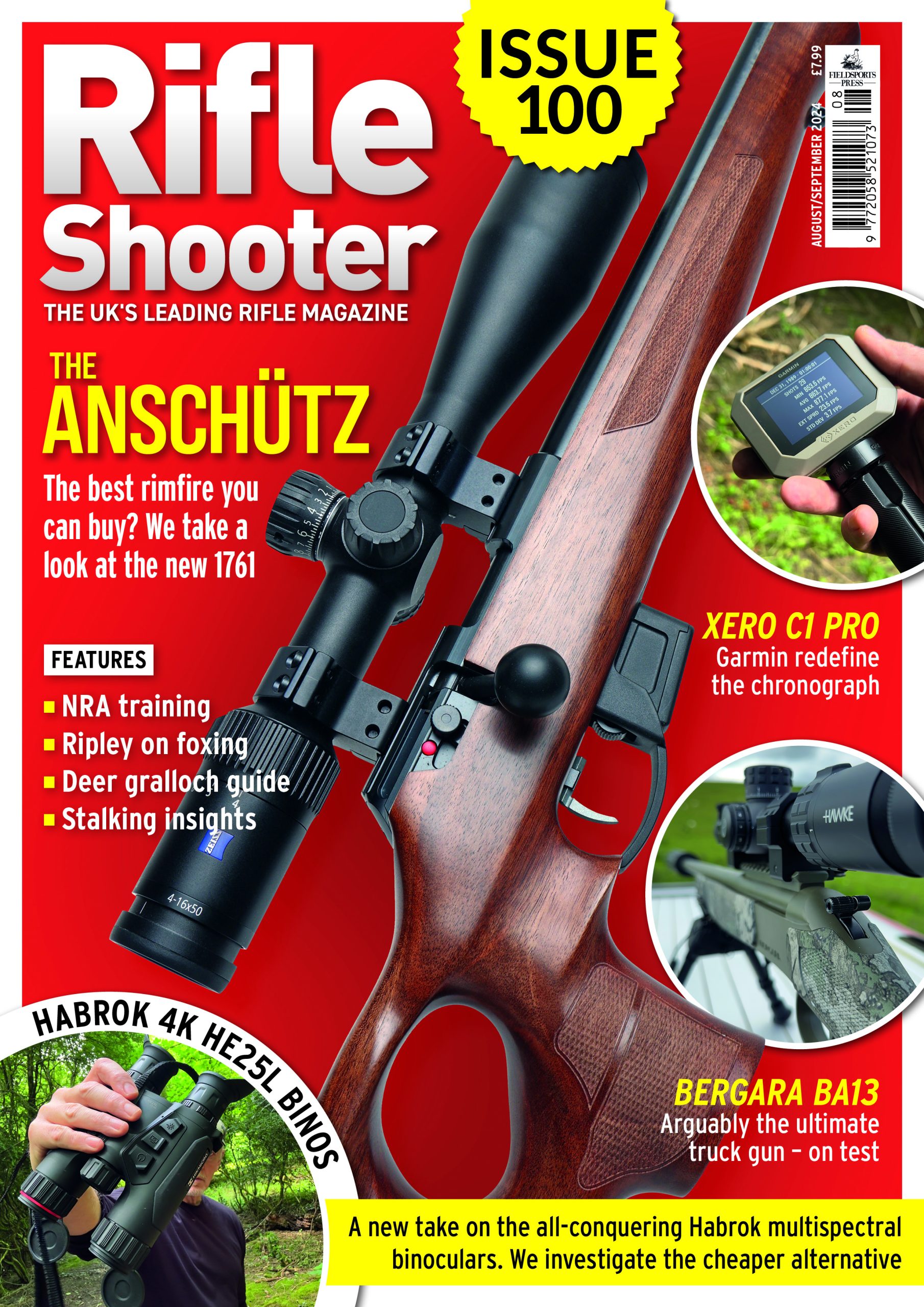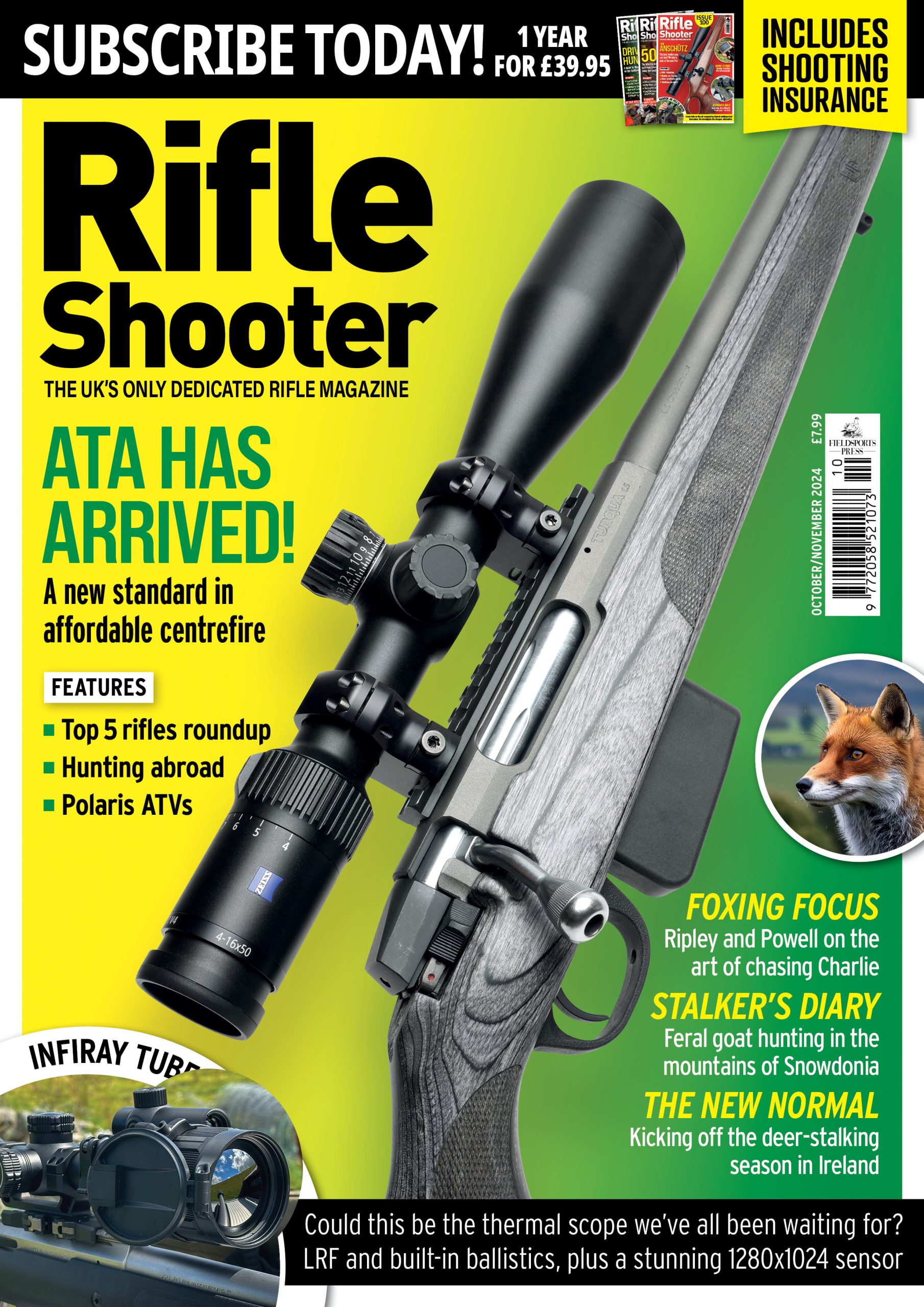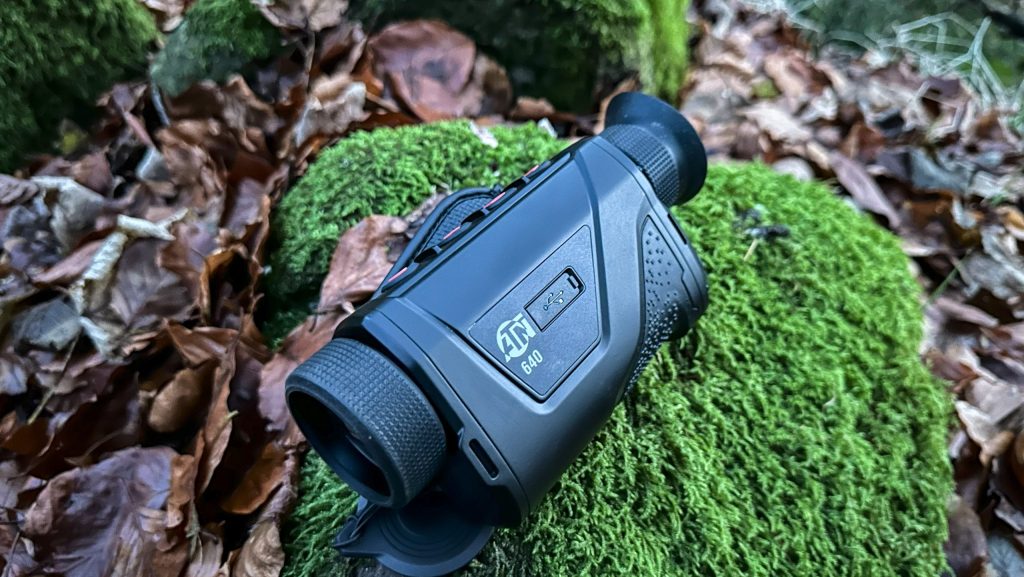HikMicro Stellar 3 SX60L

The race is on to be crowned the ‘king of the ultra HD thermals’. The two front runners are the all-new Stellar 3 SX60L and the equally impressive InfiRay Tube TS60. I tested the TS60 in the October issue and was very impressed, so the new arrival from HikMicro has a lot to live up to.
The SX60L is clearly the flagship product in the Stellar 3 lineup, with a 1280×1024 thermal sensor with a 60mm lens, a base magnification of 2.5x stretching to a rather extravagant 28.5x, and delivering a 25.6m field of view at 100m.
I won’t bore you with all the details as the Tech Specs box should answer any lingering questions. In short, the flagship Stellar offers all the bells and whistles of its competitor – or at least all those that actually matter.
They are essentially very similar – stunning imagery, amazing tech and an eye-watering asking price. The Stellar 3.0 is priced at £4,999.99 while the TS60 comes in at a slightly more palatable £3,825.00.
In terms of image quality and performance, the two are almost indistinguishable. We’re reaching a point similar to that of classic alpha glass from the likes of Swarovski, Leica, Schmidt & Bender and Zeiss. Each has its merits, but optically they’re nearly identical and a buying decision comes down more to personal preference and brand loyalty than to any tangible improvement in image quality.
Key features
Equipped with a new high-sensitivity detector (NETD of <18mK) combined with HikMicro’s new Image Pro 2.0 processing algorithm, there are absolutely no complaints about image clarity, with fine detail captured on both prey and the environment. It’s all very well balanced.
One of the standout features of the Stellar is the new HikMicro Shutterless Image System (HSIS), which eliminates the need for a mechanical shutter, so there are no more screen freezes at inopportune moments. However, the flip side is a frame rate reduction to 25Hz rather than the 50Hz typically seen on most systems. To be fair I didn’t notice any adverse effects from the frame rate change, and it’s a compromise I’m happy to accept if it’s a requirement of the HSIS. As you’d expect, there’s an integrated laser rangefinder (LRF) included, capable of pinging targets up to 1,000m and feeding its findings direct to the impressive onboard ballistics calculator.
An obvious change is the incorporation of the LRF module into the main body of the scope; it’s no longer top-mounted in the style of the Alpex but rather integrated into the the objective for the sake of aesthetics seems an odd choice for HikMicro to make, given there’s no torch to contend with on a thermal. However, it’s a layout that’s already been adopted by other manufacturers and doesn’t seem to impede performance.
A 1.03in AMOLED display with a resolution of 2560×2560 provides your window onto the world, while shock resistance can handle up to 1,000g/0.4ms. No matter which high-end thermal you opt for, it’s worth limiting yourself to a max calibre of, say, .243, as the eye relief isn’t particularly great on any of them. Nobody enjoys scope eye, and that’s a potential issue with heavier calibres unless you’re extra careful.
Like the Alpex, it provides extended battery life via a combination of internal rechargeable and external replaceable 18650 batteries, providing a claimed nine hours of continuous operation. You can expect less in cold conditions, so carry a spare just in case.
Along with the LRF and ballistic calculation, recoil-activated recording also comes as part of the package, with videos stored in the local album
for quick preview via the scope. Zeroing and freeze-frame functions are well implemented, aided by the extra resolution and image quality. There’s no need for thermal patches on warmer days – traditional high- contrast ‘shoot ’n’ see’ targets should do the job with a 100m zero.
Familiar surroundings
In terms of ergonomics and interface design, there are no complaints. Everything is logically laid out, and for anyone who has used HikMicro scopes in the past it’s all very familiar, with an almost identical user interface to the rest of the HikMicro range – thermal-specific options notwithstanding, obviously.
In short, there are no unpleasant surprises on the new Stellar. It’s very easy to use, with buttons and functions following a familiar pattern. Essentially you’re paying for the fourfold gain in terms of resolution that you get from a 1280 sensor over the 640 of the previous generation of high-resolution thermal optics.
And finally
If you’re a dedicated HikMicro/Alpex fan (and a recent lottery winner), the Stellar SX60L is a no-brainer. You’ll love the familiar interface and the leap in image quality that the larger sensor delivers. I also prefer the 2.5x base magnification over the 2.0x on the Tube TS60.
The integration of the LRF is a nice aesthetic touch but is not a game-changer in terms of field performance. As illustrated by my recent foxing trip, there were no issues with the LRF and ballistics integration.
If you’re not automatically inclined towards HikMicro, I’d advise trying the Tube TS60 and Stellar 3.0 side by side. In my opinion there’s very little to choose between them in terms of image quality, features and performance, although the sleeker on-board LRF of the Stellar does give it a more traditional day scope look.
Tech specs
Image sensor: VOx uncooled focal plane arrays
Maximum resolution: 1280 × 1024
Frame rate: 25Hz
Pixel interval: 12μm
NETD: Less than 18mK (@25°C, f# = 1.0)
Lens focal (Length): 60mm, f1.0
Minimum focusing distance: 6m
Magnification: 2.5x to 28.5x (supports 1x step value of continuous zooming)
Field of view (HxV): 14.6° x 11.7°/25.6m x 20.5m @100m
Display: 2560×2560, 1.03in OLED
Palettes: Black Hot, White Hot, Red Hot, Fusion, Red Monochrome, Green Monochrome
Exit pupil: 6mm
Eye relief: 45mm
Diopter (range): -4D to 4D
Image Pro 2.0: Yes
Record video: On-board video recording
Audio recording: Yes
Recoil-activation: Yes
Storage: Built-in EMMC (64GB)
Picture-in-picture (PIP): Yes
Hot track: Yes
Distance measurement: Yes
Zeroing profiles: 5
Freeze zeroing: Yes
Maximum recoil: 1,000g/0.4ms
Ballistic calculation: Yes
Battery type: Two rechargeable Lithium batteries, one replaceable 18650 battery.
Battery operating time: 9 hours continuous running (@25°C, LRF on).
RRP
£4,999.99
Related Articles
Get the latest news delivered direct to your door
Subscribe to Rifle Shooter
Elevate your shooting experience with a subscription to Rifle Shooter magazine, the UK’s premier publication for dedicated rifle enthusiasts.
Whether you’re a seasoned shot or new to the sport, Rifle Shooter delivers expert insights, in-depth gear reviews and invaluable techniques to enhance your skills. Each bi-monthly issue brings you the latest in deer stalking, foxing, long-range shooting, and international hunting adventures, all crafted by leading experts from Britain and around the world.
By subscribing, you’ll not only save on the retail price but also gain exclusive access to £2 million Public Liability Insurance, covering recreational and professional use of shotguns, rifles, and airguns.
Don’t miss out on the opportunity to join a community of passionate shooters and stay at the forefront of rifle technology and technique.



